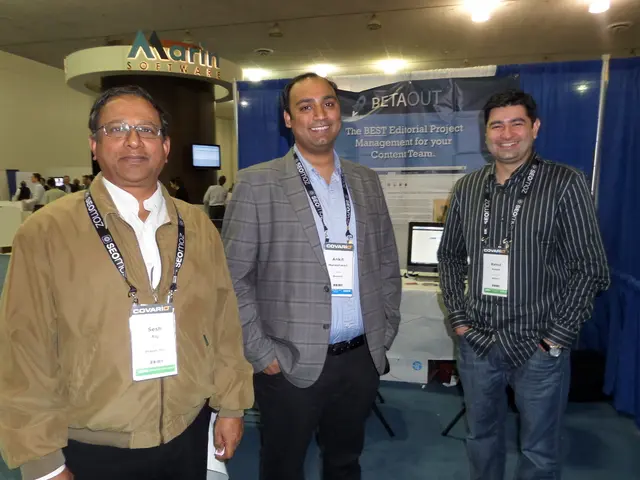Poland Breaks Into Space Frontier: A Momentous Step for Poland's Space Sector
In a groundbreaking moment for Polish space technology, the ILR-33 AMBER (BURSZTYN) 2K suborbital rocket soared to new heights, successfully completing a test flight and reaching space for the first time. This history-making event, orchestrated by the Łukasiewicz Research Network's Institute of Aviation, marks a monumental leap forward for Poland's ambitions in space exploration.
The launch took place on July 3, 2024, from the chilly climes of the Andøya Spaceport in Norway. With the exact altitude under verification, Space24.pl reports that this milestone emphasizes the skill and ingenuity of Poland's engineers. As a result, July 3, 2024, has etched itself as a signature date in the annals of Polish space history. Further details about the test flight are soon to follow.
The ILR-33 BURSZTYN 2K rocket is the world's first to utilize 98% hydrogen peroxide as an oxidizer, boasting a state-of-the-art hybrid rocket engine and solid fuel engines filled with innovative technologies primed to benefit future rocket designs. Among these advancements are the modular onboard computer OBC-K1, EGG1U pyronades, pyrotechnic valves, and the mobile autonomous launcher WR-2. Each of these components was developed by the Łukasiewicz Research Network's Institute of Aviation.
With the ability to reach speeds of almost 1.4 km/s, the rocket is intended for testing technologies within the space industry and conducting scientific research. The resounding success of the ILR-33 BURSZTYN 2K test flight demonstrates Poland's potential to make a substantial impact on international space projects.
Financial backing from the Polish Space Agency played a crucial role in bringing this achievement to fruition, highlighting the collective effort behind this national accomplishment. The technologies developed under the BURSZTYN program have paved the way for Polish consortia to participate in a multitude of international rocket projects helmed by the European Space Agency, the European Defence Agency, and the European Defence Fund.
Looking ahead, the triumph of the ILR-33 BURSZTYN 2K test flight signals a promising future for Poland's presence in the global space industry. This achievement is expected to pave the way for broader international collaborations in space exploration and defense projects.
As the details of the flight's altitude become official, the significance of this achievement will further be emphasized, cementing Poland's role in the forefront of space exploration. Stay tuned for more updates from the ever-evolving world of Polish space technology!
- Want the latest news from Poland sent straight to your inbox every Saturday? Sign up now! We respect your privacy and will never spam you.
Source: Space24.pl
Digging Deeper: Poland's Soaring Space Ambitions
Poland's growing role in the global space industry is fueled by a series of strategic partnerships, events, and research collaborations. In preparation for the EU Space Days 2025, hosted in Gdańsk and aligned with Poland's Presidency of the Council of the EU, European institutions, industry leaders, entrepreneurs, and investors gather to discuss advancing the EU Space Programme. Key initiatives on the agenda include Galileo, EGNOS, Copernicus, Secure Satcom, and Space Situational Awareness (SSA).
Building on this momentum, Poland hosts Aerodays 2025, the first time this significant conference has graced Polish soil. This event focuses on promoting sustainable aviation, competitiveness, digitalization, artificial intelligence in aviation, and international R&D cooperation. All of which can benefit Poland's expanding space industry by fostering strategic alliances, reinforcing research and innovation ecosystems, and encouraging startup growth.
Poland's active participation in European space initiatives, such as the hosting of Aerodays 2025 and the upcoming EU Space Days, strengthens its status as a valued partner in international space projects. These events facilitate networking and partnership opportunities for Poland's space sector, while emphasizing business-driven approaches and cross-border collaborations in satellite technology, space data services, and defense-related space applications.
Poland's involvement in astronautical research and cooperative missions, like the Ax-4 mission featuring Polish research objectives, underlines Poland's active participation in European Space Agency (ESA)-linked initiatives and space science collaborations.
As Poland's space industry continues to grow and evolve, the country's focus on sustainability, competitiveness, digital transformation, and new space entrepreneurship sets the stage for Poland to carve out a prominent niche in the European and international space community alongside its partners.
These developments promise a bright future for Poland's space industry, fostered by its collaboration with European and international partners and committed to the pursuit of scientific research, technological advancements, and commercial space activities.
- The successful test flight of the ILR-33 AMBER (BURSZTYN) 2K rocket, which utilizes advanced technologies and innovative components, underlines Poland's potential to make significant contributions to international space projects.
- The resounding success of the ILR-33 BURSZTYN 2K test flight is expected to pave the way for Poland's participation in numerous international rocket projects led by organizations like the European Space Agency, European Defence Agency, and European Defence Fund.
- As Poland continues to excel in space exploration and technology, its role in international collaborations in space exploration and defense projects is likely to expand, emphasizing its position at the forefront of global space industry.
- The ILR-33 BURSZTYN 2K's intended purpose for testing technologies within the space industry and conducting scientific research underscores the importance of artificial intelligence, digitalization, and research and development cooperation in Poland's expanding space industry.






